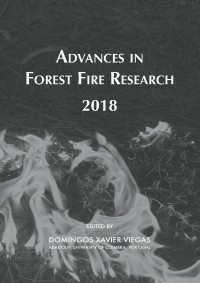Please use this identifier to cite or link to this item:
https://hdl.handle.net/10316.2/44575| Title: | Literature review on the transition from smouldering to flaming fires and its application to peat fires | Authors: | Santoso, Muhammad Agung Yang, Jiuling Chen, Haixiang Rein, Guillermo |
Keywords: | Smouldering;Transition to flaming;porous fuels;peatlands | Issue Date: | 2018 | Publisher: | Imprensa da Universidade de Coimbra | Journal: | http://hdl.handle.net/10316.2/44517 | Abstract: | Smoldering combustion is the slow, low temperature, flameless burning of porous fuels and the most persistent type of combustion phenomena. Overall, smoldering is responsible for up to 50 % or more of the total burned biomass during wildfires, and it is the driving phenomenon of wildfires in peatlands. Once ignited, peat fires burn for very long periods of time (e.g., months, years) despite extensive rains, weather changes or fire-fighting attempts. In wildland fires, smouldering and flaming combustion often occur simultaneously, and one can lead to the other. Despite being a fundamental question in combustion phenomenon, firm understanding on transition from smouldering to flaming is not yet accomplished due to its complexity. At best, literatures are sparsely connected with each literature reported different variables as transition criteria (e.g. sample particle size, air velocity, oxygen concentration, and external heating). This review compiles these informations and proposes hyprothesis that feasible to be tested. Since most of the samples in the literatures represent synthetic porous fuels, the implication of proposed hypothesis of transition mechanism on natural porous fuels (e.g. peat) will be discussed. | URI: | https://hdl.handle.net/10316.2/44575 | ISBN: | 978-989-26-16-506 (PDF) | DOI: | 10.14195/978-989-26-16-506_58 | Rights: | open access |
| Appears in Collections: | Advances in forest fire research 2018 |
Files in This Item:
| File | Description | Size | Format | |
|---|---|---|---|---|
| literature_review_on_the_transition_from_smouldering.pdf | 747.84 kB | Adobe PDF |  |
Items in DSpace are protected by copyright, with all rights reserved, unless otherwise indicated.
